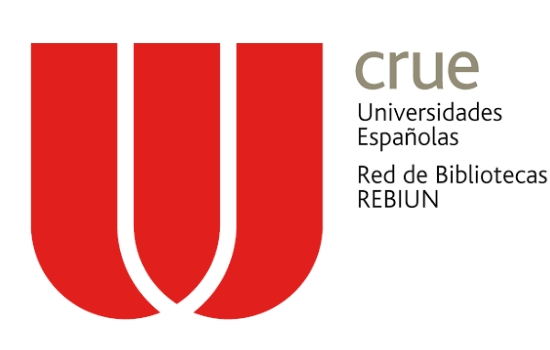Developing an alternative curriculum for mathematics teaching in a detention faculty adopting an ethnomathematics perspective
DOI:
https://doi.org/10.22267/relatem.2215E.98Keywords:
Prison Education, Mathematics Education, Ethnomathematics, Social Justice, Mathematics CurriculumAbstract
In Greece, as more or less all over the world, the curriculum is a matter of central authority and teachers can only apply it in their classrooms, without any connection to the whole curriculum development process.
Students’ population in prison schools, and especially young prisoners, often show school denial, poor performance, academic inadequacy, and failure, leading to low self-esteem (Mallett, 2014). Common barriers to participation are lack of motivation —often because of the absence of any means for meaning-making and identity formation in prison— and previous negative education experiences (Liebling, 2011) especially in secondary school when they frequently begin to truant.
Working, as teacher, for long time in the secondary school of a youth detention center in Greece, I faced the challenge to reconsider the formal curriculum. Following an ethnomathematics perspective, an alternative curriculum is developing aiming to meet young prisoners’ needs and expectations as a matter of social justice, taking into consideration the need of techniques and strategies that can help to untangle and respond to above structures as part of ongoing research, policy, and practice.
The young detainees following the official curriculum applied in the mainstream classes are faced with various problems, such as lack of appropriate schoolbooks, the need to motivate and successfully address educational, psychological and environmental difficulties, and the need for developing a framework for alternative teaching practices and materials based on a multicultural education with the teaching and learning of mathematics, as is the case in the field of ethnomathematics is dictated.
Downloads
References
Ahl, L. M. (2020). Individualized Mathematics Instruction for Adults: The Prison Education Context (Doctoral dissertation, Department of Mathematics and Science Education, Stockholm University).
Al Kandari, A. M., & Al Qattan, M. M. (2020). E-task-based learning approach to enhancing 21st-century learning outcomes. International Journal of Instruction, 13(1), 551-566.
Blazich, G. S. (2007). La educaci n en contextos de encierro.Revista Iberoamericana de Educaci n, (44), 53-60. Retrievedfromhttps://dialnet.unirioja.es/servlet/articulo?codigo=2372339 (January 19, 2017).
Byrne, C., Carr, M. (2015). Maths in Prison. Journal of Prison Education and Reentry. Vol. 2 No. 2, December 2015.
Carr, W., & Kemmis, S. (2004). Becoming critical: Education, knowledge and action research. Taylor & Francis e-Library.
Chalatsis, X., (2016). Education in penitentiary contexts en Torlone, F., & Vryonides, M. (Eds.).(2016). Innovative learning models for prisoners (Vol. 4). Firenze University Press. (pp. 1-9).
Costelloe, A. & Warner, K. C. (2008). Beyond offending behavior: The wider perspective of adult education and the European Prison Rules. In R. Wright (Ed.), In the borderlands: learning to teach in prisons and alternative settings (pp. 136-146). San Bernardino: California State University.
Council of Europe-Committee of Ministers (2006), Recommendation Rec(2006)2 of the Committee of Ministers to member states on the European Prison Rules (Adopted by the Committee of Ministers on 11 January 2006 at the 952nd meeting of the Ministers’Deputies), <https://wcd.coe.int/ViewDoc.jsp?id=955747#P6_139> (03/16).
D’Ambrosio, U.: 1994, ‘Cultural framing of mathematics teaching and learning’, in R.
D'Ambrosio, U., & D'Ambrosio, B. S. (2013). The role of ethnomathematics in curricular leadership in mathematics education. Journal of Mathematics Education at Teachers
College, 4(1).
Department for education and skills (2003). Materials for assessing adult numeracy - Excellence Gateway. https://repository.excellencegateway.org.uk/Diagnostic%20assessment_%20numeracy_
%20lea rner%20materials%20for%20assessing%20Entry%201.pdf,
https://repository.excellencegateway.org.uk/Diagnostic%20assessment_%20numeracy_%20lea rner%20materials%20for%20assessing%20Entry%202.pdf,
https://repository.excellencegateway.org.uk/Diagnostic%20assessment_%20numeracy_%20lea rner%20materials%20for%20assessing%20Entry%203.pdf
Elliott, J. (1991). Action research for educational change. Buckingham: Open University Press.
Farley, H., & Pike, A. (2016). Engaging prisoners in education: Reducing risk and recidivism. Advancing Corrections: Journal of the International Corrections and Prisons
Association, 1, 65-73.
Gavigan, K., & Albright, K. (2015). Writing From Behind the Fence: Incarcerated Youths and a Graphic Novel on HIV/AIDS. Journal of Adolescent & Adult Literacy, 59(1), 41-50.
Gill, C., & Wilson, D. B. (2017). Improving the success of reentry programs: Identifying the impact of service–need fit on recidivism. Criminal Justice and Behavior, 44(3), 336-359.
Graybill, E., Baker, C. N., Cloth, A. H., Fisher, S., & Nastasi, B. K. (2018). An analysis of social justice research in school psychology. International Journal of School & Educational Psychology, 6(2), 77-89.
Goralnik, L., Millenbah, K. F., Nelson, M. P., & Thorp, L. (2012). An environmental pedagogy of care: Emotion, relationships, and experience in higher education ethics learning. Journal of Experiential Education, 35(3), 412-428.
Hawley, J., Murphy, I., and Souto-Otero, M. (2013) Prison Education and Training in Europe: Current state-of- play and challenges. A report submitted by GHK to Directorate General for Education and Culture. London: European Commission.
Hirschfield, P. J. (2014). Effective and promising practices in transitional planning and school
reentry. Journal of Correctional Education (1974-), 65(2), 84-96.
Hughes, E. (2016). Education in prison: Studying through distance learning. Routledge.
Jonck, P., Goujon, A., Testa, M. R., & Kandala, J. (2015). Education and crime engagement in
South Africa: A national and provincial perspective. International Journal of Educational Development, 45, 141-151.
Katsarou, Ε. & Tsafos, V. (2003). From research to teaching. The educational research action.
Athens: Savvalas.
Kawarti, Y. (2020, May). Design learning development of a set topic based on the problem based learning on grade VII Junior High School. In Journal of Physics: Conference Series (Vol. 1554, No. 1, p. 012069). IOP Publishing.
Klein, S., Tolbert, M., Bugarin, R., Cataldi, E. F., & Tauschek, G. (2004). Correctional education:
Assessing the status of prison programs and information needs. Maryland, M.D: U.S
Department of Education.
Liebling, A. (2011). Moral performance, inhuman and degrading treatment and prison pain.
Punishment & Society, 13(5), 530-550.
Mallett, C. A. (2014). The “learning disabilities to juvenile detention” pipeline: A case study.
Children & Schools, 36(3), 147-154.
Mortari, L. (2016). For a pedagogy of care. Philosophy, 6(8), 455-463.
Ochoa, T. A. (2016). Improving Transition Support for Juvenile Offenders With Disabilities Through a Collaborative Approach. Intervention in School and Clinic, 52(1), 44-50.
Oikonomakis, M. (2014). The nostalgia of the prison officer and the odyssey of a relationship.
Like a prisoner, 18, 8.
Pytash, K. E., & Li, J. (2014). The writing dispositions of youth in a juvenile detention center. Journal of Correctional Education (1974-), 65(3), 24-42.
Roberson, Q. M. (2006). Disentangling the Meanings of Diversity and Inclusion in Organizations. Group & Organization Management, 31(2), 212–236.
Rowlands, S., & Carson, R. (2004). Our Response to Adam, Alangui and Barton's" A Comment on Rowlands & Carson ‘Where Would Formal, Academic Mathematics Stand in a
Curriculum Informed by Ethnomathematics? A Critical Review'". Educational Studies in Mathematics, 329- 342.
Sauerwein, M. (2020, February). Teaching mathematics in an international class: Designing a
path towards productive disposition. In Eleventh Congress of the European Society for Research in Mathematics Education (No. 27). Freudenthal Group; Freudenthal Institute;ERME.
Shehenaz, A., Wilfredo, A. and Barton, B. (2003). A comment on: Rowlands & Carson Where would formal, academic mathematics stand in a curriculum informed by ethnomathematics? A critical review’ Educational Studies in Mathematics 52: 327–335, 2003. Kluwer Academic Publishers. Printed in the Netherlands
Stathopoulou, C., (2005). Ethnomathematics: exploring the cultural dimension of Mathematics
and of Mathematics Education. Athens: Atrapos.
Stathopoulou, C. (2007). The activities of counting and measuring in a Romany Community and in school context. Journal of Interdisciplinary Mathematics, 10(4), 497-512.
Wexler, J., Pyle, N., Flower, A., Williams, J. L., & Cole, H. (2014). A synthesis of academic interventions for incarcerated adolescents. Review of Educational Research, 84(1), 3-46.
Willig, C. (2013). Introducing qualitative research in psychology. McGraw-hill education (UK).
Wilson, S. M. (1995). Not tension but intention: A response to Wong's analysis of the researcher/teacher. Educational Researcher, 24(8), 19-22.
Wittmann, E. C. (1995). Mathematics education as a ‘design science’. Educational studies in
Mathematics, 29(4), 355-374.
World Health Organization (2014). Prisons and Health. Retrieved from http://www.euro.who.int/ data/assets/pdf_file/0005/249188/Prisons-and-Health.pdf.
Downloads
Published
How to Cite
Issue
Section
License

This work is licensed under a Creative Commons Attribution 4.0 International License.
Once the article is accepted by the Latin American Journal of Ethnomathematics, the authors cede the rights to publish and distribute the text electronically, including storing it and making it available online.
The authors can distribute their own material without soliciting permission from the Latin American Journal of Ethnomathematics, whenever mentioning that the original version is found at http://www.revista.etnomatematica.org
Copyright © 2008, Latin American Journal of Ethnomathematics
All contents of the Latin American Journal of Ethnomathematics are published under the _ and can be used freely, giving credits to the authors and to the Journal, as established by this license.











